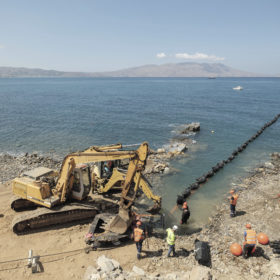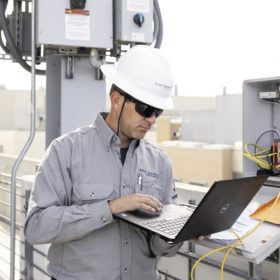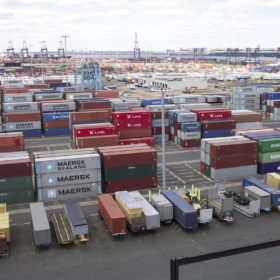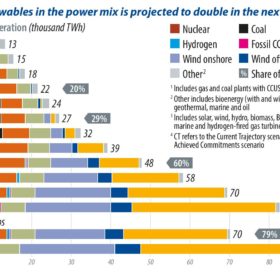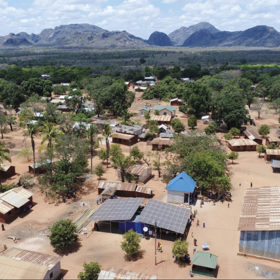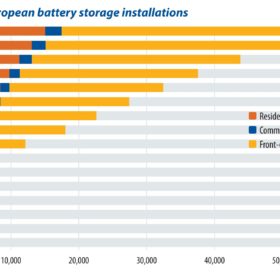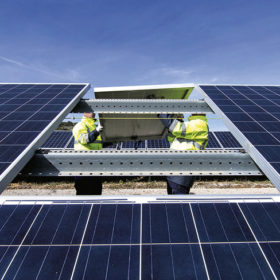Connecting MENA
The spark of renewables in the MENA region has increased the need for new interconnectors. Big projects with high capacities are being planned across borders to raise electricity exchanges across the region, reviving the dream of a MENA integrated electricity grid.
Celebrating solar in MENA
More than 200 guests celebrated the Middle East Solar Association’s (MESIA) 10th Annual Awards during Abu Dhabi Sustainability Week. The event recognized an industry that is not only transforming the regional market, but thriving in spite of the pandemic and supply chain challenges. pv magazine’s Felicia Jackson reports from Abu Dhabi, which was shown live online on the Middle East Solar Energy Digital Channels and Solarabic.
Super-grid forming in the Mediterranean
Electricity generation in the Middle East and Africa could soon support the development of an interconnection between Greece, Cyprus, Israel and Egypt. Ilias Tsagas examines the landscape for this infrastructure mega-project, and the possible benefits for solar.
The hidden engine of solar scaling
As Germany and other countries accelerate their plans for 100% renewables in the face of an unfolding energy crisis, Timo Moeller – the managing director of NovaSource Power Services – argues that the industry will need to adopt cutting-edge solutions in the operation and management of power plants if renewable sources are to provide the secure, reliable energy infrastructure needed to replace fossil fuels at the center of our energy systems.
Industry stands by forced labor crackdown
Despite a year of import woes, the US solar industry has made it clear that it supports the ban of goods from the Xinjiang region of China, which is responsible for 50% of the world’s polysilicon supply. pv magazine USA’s Ryan Kennedy reports that the challenges in clearing the new hurdles to importing PV modules are high, but he notes that the industry is working to overcome them.
With collaboration comes meteoric growth
The solar industry is heating up, with rapid technological advances and supply chain optimization lowering costs by 50% in the past five years. McKinsey & Company predict that the levelized cost of energy will fall another 65% by 2040. Based on this progress and increasing political will for decarbonization, McKinsey and Company’s Bram Smeets and Jesse Noffsinger point to a period of rapid expansion ahead.
African energy’s investment gap
Well over 600 million people throughout the world do not have access to electricity, while another 1.5 billion suffer with unreliable electricity services. Sub-Saharan Africa accounts for more than 70% of the electricity access gap. Moreover, writes David Lecoque of the Alliance for Rural Electrification (ARE), the number of people without access to electricity did not change all that much between 2019 and 2021.
Meeting Europe’s growing need
With its move into the mainstream, battery energy storage faces a shifting supply landscape. And within said landscape, opportunities may emerge for chemistries beyond Li-ion and even all new energy storage technologies, writes Jon Ferris, head of flexibility and storage at Delta-EE.
Mining for gold in legacy PPAs
As the pace of solar installations quickens, developers are racing to find the best remaining sites and optimize their position in interconnection queues. But what if the best investment opportunity is hidden in a site built a decade or more ago? Time gets the better of us all, and many early solar sites no longer perform as expected. Yet those sites generally sell power at prices today’s developers can only dream of. Chris Chappell and Stephen Shirey of Clean Energy Associates examine what can be done to unlock the value in these legacy sites.
Five strategies for battery procurement
The worst effects of the pandemic may have passed, but supply chain disruptions continue to be felt across the world. The effects of the war in Ukraine are also evident to all of us in our daily lives, from commodities to energy, food supply chains and beyond. The disruption in the battery energy storage system (BESS) supply chain is no different, writes Cormac O’Laoire, senior manager of market intelligence at Clean Energy Associates. Indeed, as the cost of raw materials such as lithium climb, battery prices are being driven materially higher, on some accounts by 20% to 30%, rendering some projects uneconomical.


